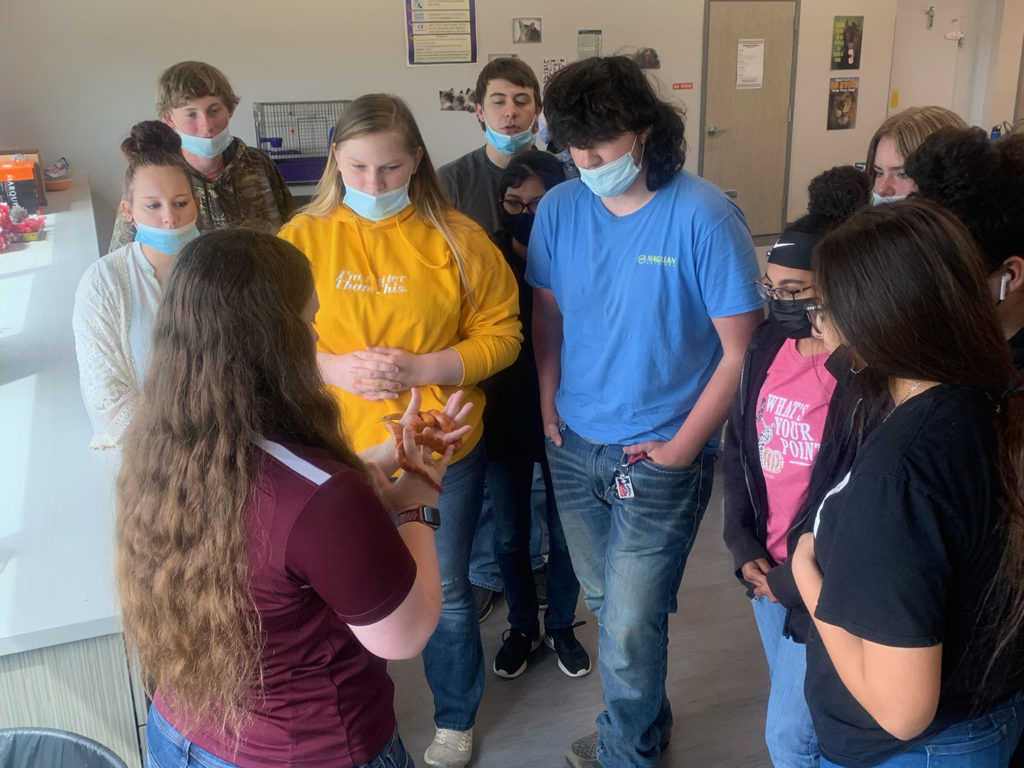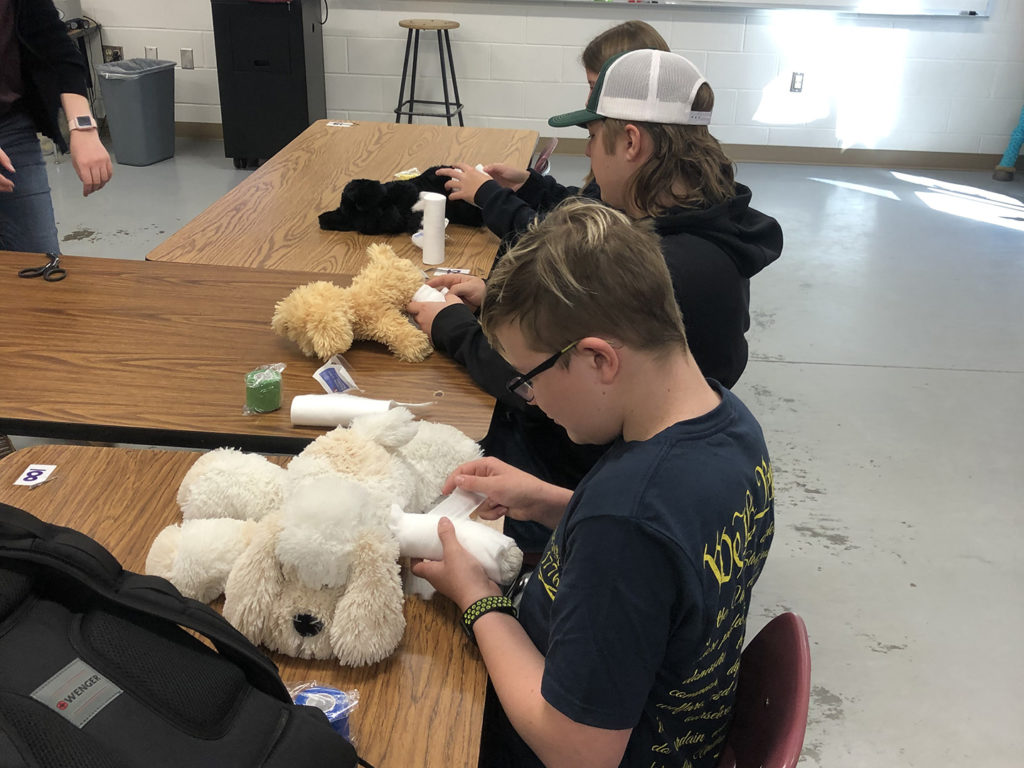PEER Veterinary Student Fellows Dive Into Full Summer Of Educational Activity
Story by Margaret Cook, Kristen Watts, and Kallyn Ciesynski

The Partnership for Environmental Education and Rural Health (PEER) Program at the Texas A&M College of Veterinary Medicine & Biomedical Sciences (CVMBS) has started off the summer of 2021 with a whirlwind of activity.
The PEER Program serves as an educational outreach resource for schools, summer camps, and other outlets for K-12 students across Texas. It also provides a platform of employment for CVMBS Doctor of Veterinary Medicine (DVM) students, who can gain the invaluable experience of working in diverse teaching and educational settings.
The PEER veterinary student fellows began the summer with visits to career fairs and events at Somerville High School, Whitehouse High School, Caldwell High School, and Rudder High School.
Kristen Watts, a second-year veterinary student at Oklahoma State University, has returned to work for the PEER Program this summer after working as a student fellow during her undergraduate education at Texas A&M University.
“At the Somerville Career Fair, PEER had the opportunity to interact with more than 100 high school students,” Watts said. “My favorite part of the event was sharing my DVM journey and knowledge with the students.
“A few years ago, I was in the same place they are now, trying to figure out my pathway to veterinary medicine,” she said. “Were I in their shoes again, it would have been a great benefit to hear some of the things I know now about choosing a major and how the application process truly works. It’s an awesome feeling knowing that I played a part in helping them learn more about the possibilities in the world of veterinary medicine.”
At Whitehouse High School, the PEER veterinary student fellows taught 10th-12th graders taking veterinary science courses the principles of the most common bandaging techniques in veterinary medicine and allowed them hands-on practice with artificial animal models.
“I enjoy helping with these activities because it often drives many questions from the students about techniques, how I got to where I am in school, my interests in veterinary medicine, and college applications, in general,” said Kallyn Ciesynski, a CVMBS second-year veterinary student. “Knowing that I made an impact on an individual’s future and helped answer any questions that they may have about the process is a success in my books.”

For each educational outreach event that PEER hosts, the veterinary students find ways to relate veterinary medicine to the science or learning principles that the students they are interacting with are currently learning.
“Although not all of our educational events are with veterinary science courses like the one in Whitehouse, many are based in STEM principles, which is the basis for veterinary medicine and many other health and medical professions,” Ciesynski said.
In addition to helping young students, CVMBS veterinary students benefit from PEER educational events as well. Margaret Cook, a CVMBS third-year veterinary student, said she feels being a PEER fellow will help her professionally as a future veterinarian.
“As we prepare learning materials for each event, I am challenged to check my own understanding of the materials I will teach and I get to dive deeper into concepts I’ve already been exposed to in my DVM curriculum,” Cook said. “Listening to the questions that the kids ask also makes me better, because I can find places in my science and veterinary knowledge that I can improve upon.”
The PEER veterinary student fellows appreciate all opportunities to sharpen their communication skills as they share their knowledge about One Health and veterinary medicine with K-12 students. The PEER Program has plans to work with many different summer camps, wildlife organizations, and student programs during the summer of 2021.
To schedule a virtual or in-person educational outreach event for your students, contact the PEER Program at cvmpeer@cvm.tamu.edu. PEER also offers many free educational resources at https://vetmed.tamu.edu/peer/teacher-resources/.
###
For more information about the Texas A&M College of Veterinary Medicine & Biomedical Sciences, please visit our website at vetmed.tamu.edu or join us on Facebook, Instagram, and Twitter.
Contact Information: Jennifer Gauntt, Director of VMBS Communications, Texas A&M College of Veterinary Medicine & Biomedical Sciences, jgauntt@cvm.tamu.edu, 979-862-4216


